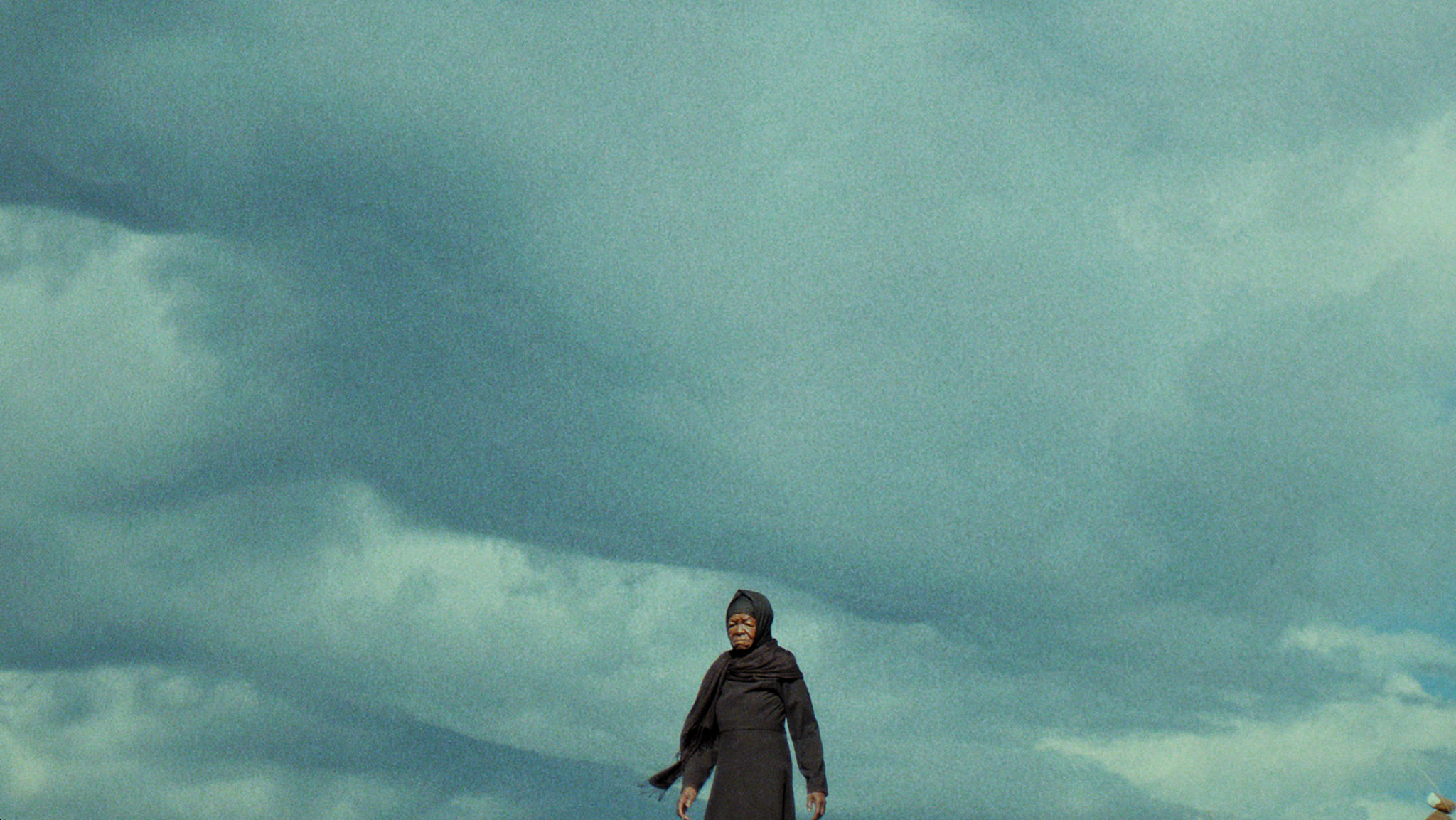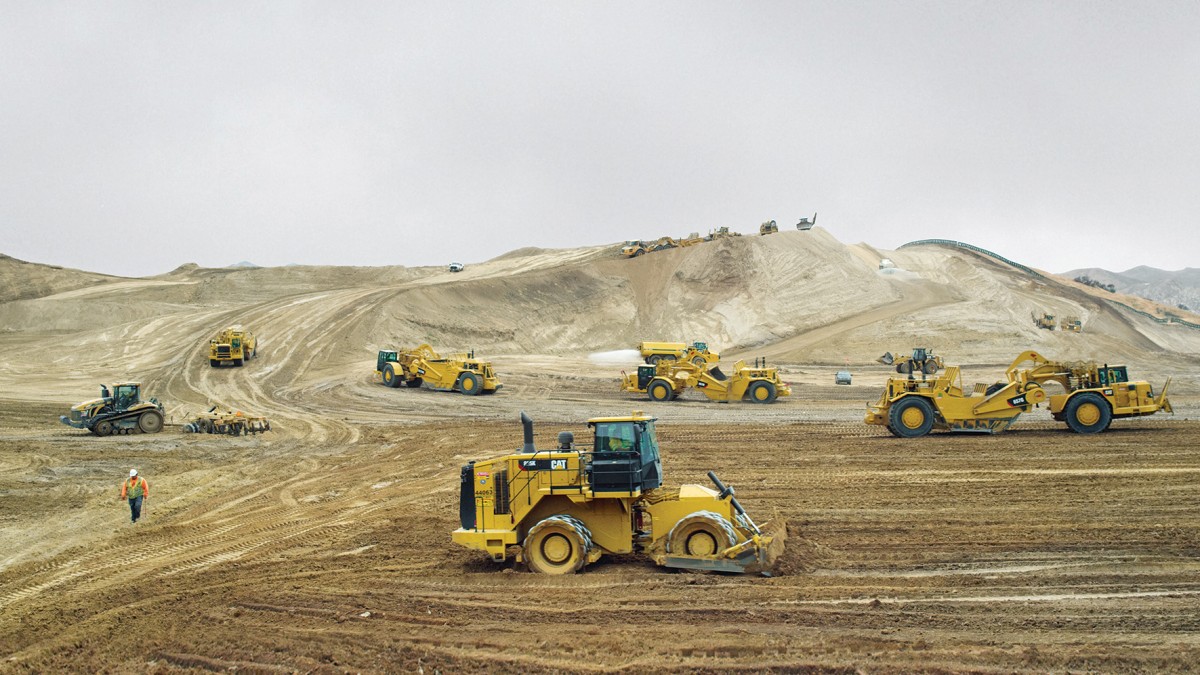Shifts in landscape – October Monthly Top
A major cause of climate change in recent years is the way we transform and reshape the earth to better accommodate insatiable human needs. The magnitude of these changes probes the very essence of human activity, revealing aspects of power and representation that define today’s socio-cultural heritage. For this month’s column, I have revisited a few films that present in the exploitation of the earth’s surface the essence of a mutilated home, pre-engineered in our image and likeness.
Behemoth / Bei xi mo shou (dir. Zhao Liang, China, 2015)

With biblical references to the Old Testament monster, Behemoth is a social critique denouncing the bestiality of civilization, which is turning the earth upside down and depleting its resources. The mythology doesn’t stop there, with Zhao Liang citing Dante’s Descent into Hell from the Divine Comedy both formally and metaphorically. The literary inspiration serves as a background for the structure of the journey undertaken in this documentary, which demarcates the different settings by color transition and uses a conceptual voice-over, marked by subtitles appearing to the side of the striking imagery, amplifying its meaning. Shot by Liang himself, the film is divided into the same three chapters as Dante’s poem – the chapter depicting the coal and mineral mining in Mongolia is by far the most impressive. The cinematography is complemented by a character crouching in unusual spaces, such as the open ground of an excavation site, indicating, as in a performance, the presence of man at the center of such endeavors. People destroy for their own well-being, and this intervention backfires against them like a boomerang. As a result, the ecological disaster is the protagonist of some spectacular shots, in which the elevator that carries the workers deep into the belly of the whale acts as a boatman as morbid as Charon. The Purgatory chapter gives an ambivalent dimension to the act of exploitation, its agents being the first to reap the consequences of the harm caused to the natural environment. Like his compatriot Wang Bing in the epic West of the Tracks (2003), Liang zooms in on those exploited in such factories at the cost of their lives. And in the end, the expected paradisiacal redemption is nothing more than just some abandoned high-rises, a product of the Chinese real estate boom that emulates a rather unsustainable lifestyle.
This Is Not a Burial, It’s a Resurrection (dir. Lemohang Jeremiah Mosese, Lesoto, South Africa, Italy, 2019)

Basotho director Lemohang Jeremiah Mosese’s second feature established him as one of the most interesting voices in African cinema. Inspired by his origins, This Is Not a Burial, It’s a Resurrection is, like his previous films, an ambivalent exploration of the individual’s relationship with tradition. The conflict between ancestral values and the urge for progress has also reached the village of Nazareth in Lesoto, where the action takes place, now threatened with extinction by the construction of a tailings dump. A situation that reminds one of a previous case in Romania – the Roșia Poieni copper mine, which led to burying the village of Geamăna –, Nazareth is condemned to lose its cemetery, but especially its ethnographic identity, the connection with its ancestors that builds the idea of community. The protagonist, Mantoa, an 80-year-old widow, is waiting to join her son who recently died in a work accident in a mine, but her plans are turned upside down by the governors’ ambitions. As a country with a not-so-distant colonial past that exports water to South Africa, the land claim (inspired by true events) depicted in This Is Not a Burial, It’s a Resurrection becomes a responsibility that transcends ecological conscience. True to a unique and unpredictable style, Lemohang prioritizes “how” over “what” to film, avoiding the trap of aestheticizing precarity. Although the signs of human intervention on the landscape are minimal, the director prefers to create tension between old and new by integrating documentary elements and the influence of oral traditions, but above all by recreating the community’s connection with the inhabited space. In this sense, This Is Not a Burial, It’s a Resurrection takes the form of a surreal parable, with camera movements that take in the surroundings and angles that distort the view, adopting a classic 4:3 format with rounded edges. It’s a remarkable hymn to land in the context of the literal uprooting proposed by the new world.
Earth / Erde (r. Nikolaus Geyrhalter, Austria, 2019)

Earth opens with a panoramic shot of a mining operation in California. Gigantic machines probe the desert sand as they move large amounts of soil from one place to another. The workers describe their work as literally moving mountains. Geyrhalter’s ecological view gives way to the observational and non-intervening recording of reality, giving the feeling that the images come naturally, without the filter of an agenda, albeit a critical one. The camera is at eye level but doesn’t follow a particular logic in terms of line of events or narrative arc, denoting an opacity reminiscent of Frederick Wiseman’s non-fiction, in that the separation between the camera and reality is conscious and assumed, shifting the power of image to its descriptive capability. Exploring the topic of labor, which the director has tackled several times in his previous films (CERN, 2013; Our Daily Bread, 2005), Earth portrays multiple situations of manipulating the soil, either by fracking for the exploitation of natural gas, by mining for the extraction of copper and marble, or by simply expanding the commercial and residential area. Geyrhalter interviews the protagonists of these changes against nature with no holds barred: a head-on frontal view, with the artificial landscape in the background, without disguising the questions or the cuts between shots. It impacts the transparency with which earth is treated as matter, both in its manipulation and especially in the conscious approach to its transformation and alteration. Although the time allocated to personal opinions on the activities carried out reveals traces of regret, the work of man presents itself as an expression of sexualized megalomania, where men engage in the taming of the surface and its penetration as an act of forced possession.
Earth is available on Vimeo.
Río Turbío (dir. Tatiana Mazú, Argentina, 2020)

Another title that alludes to the implicit sexism in the mining activity is Río Turbio, a political and at the same time personal essay film by Argentinian director Tatiana Mazú. Starting from her own family’s personal history, the film investigates the patriarchal and capitalist structures of Río Turbio, a mining town in Patagonia. Mazú uses a cinematic language of her own to embark on a socio-cultural investigation in a world forbidden to women. Moreover, according to an email exchange that sets the tone of the film, no women are allowed to enter the mines of Río Turbio, with the village population being segregated by this discrimination justified by myths and legends. According to tradition, women are also to blame for the human lives lost in the coal mine, as the earth is jealous of their underground presence and responds accordingly with landslides. The feminine attracts bad luck and superstition, while the masculine is the symbol of the sacred and power that runs the activity of exploiting the earth’s resources. Despite being banned to film, the director sinks into the depths of the mine and reveals, along with the geological layers, the distinct voices of women silenced by repression. Conceived as a dialogue between past and present, mixing testimonies by women removed from public life with a feminist radio program initiated by the director’s aunt and images from the family archive, Río Turbio reveals the perception of the female body as territory. The patron saint of the mine is in turn a woman, but not just any woman – Saint Barbara, the embodiment of the virginal purity of the Mother of God, so the violation of the taboo means the defilement of this image of perfection. All the shortcomings of exploitation have a female face; a sign of man’s sin and fall, the exploitation of earth’s resources is a conquest ground and an exponent of the internalized misogyny that brought us here.
Río Turbio is available on DAFilms.
Film critic and programmer, she collaborates with various international film festivals. Her writing has appeared in publications such as Senses of Cinema, Kinoscope, Indiewire, Film Comment, Vague Visages and Desistfilm. In Spanish she has written for Caimán Cuadernos de Cine and in Romanian she collaborates with FILM magazine. Programmer and coordinator of Tenerife Shorts.
